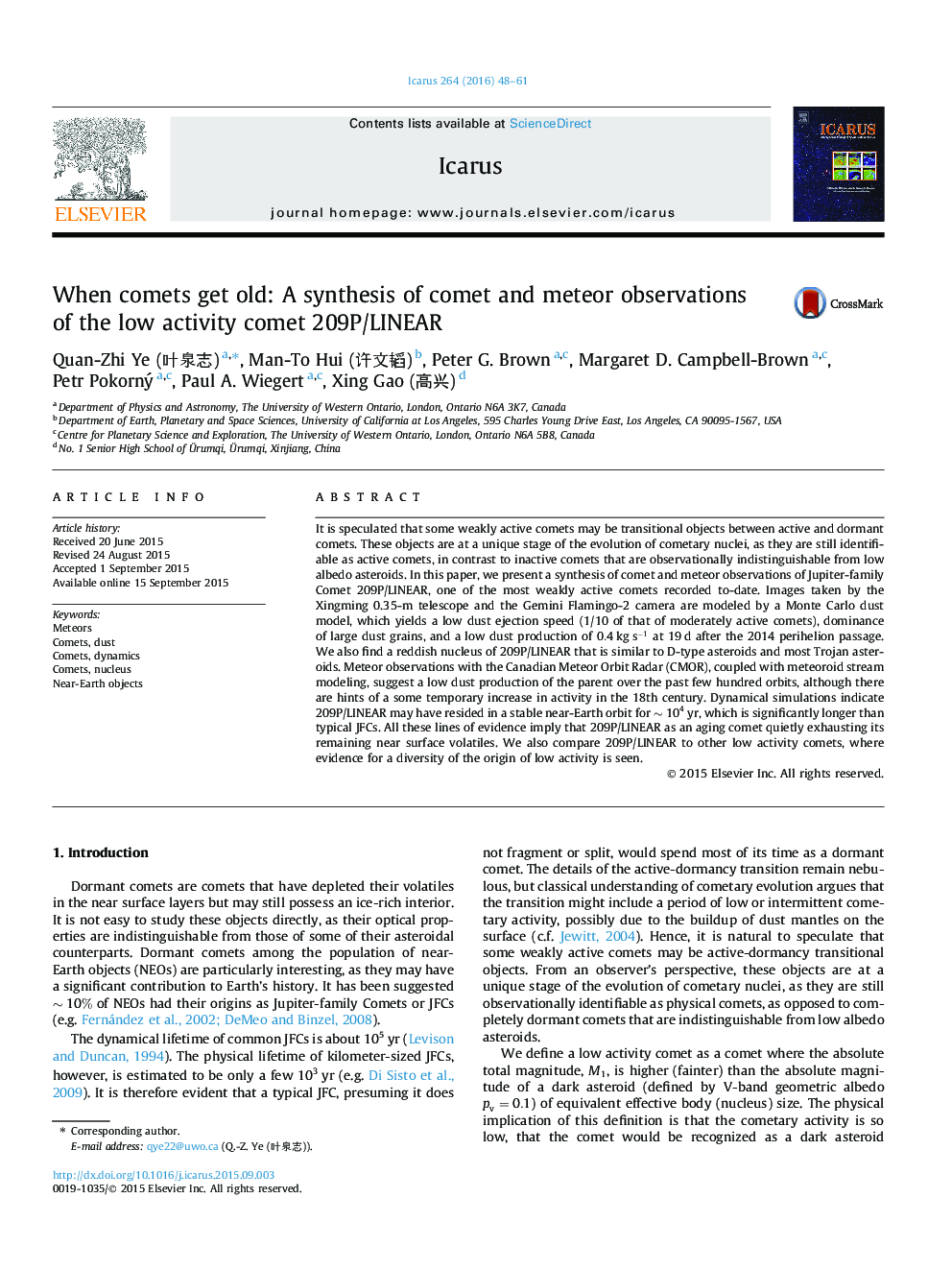| کد مقاله | کد نشریه | سال انتشار | مقاله انگلیسی | نسخه تمام متن |
|---|---|---|---|---|
| 8135836 | 1523526 | 2016 | 14 صفحه PDF | دانلود رایگان |
عنوان انگلیسی مقاله ISI
When comets get old: A synthesis of comet and meteor observations of the low activity comet 209P/LINEAR
دانلود مقاله + سفارش ترجمه
دانلود مقاله ISI انگلیسی
رایگان برای ایرانیان
کلمات کلیدی
موضوعات مرتبط
مهندسی و علوم پایه
علوم زمین و سیارات
علوم فضا و نجوم
پیش نمایش صفحه اول مقاله

چکیده انگلیسی
It is speculated that some weakly active comets may be transitional objects between active and dormant comets. These objects are at a unique stage of the evolution of cometary nuclei, as they are still identifiable as active comets, in contrast to inactive comets that are observationally indistinguishable from low albedo asteroids. In this paper, we present a synthesis of comet and meteor observations of Jupiter-family Comet 209P/LINEAR, one of the most weakly active comets recorded to-date. Images taken by the Xingming 0.35-m telescope and the Gemini Flamingo-2 camera are modeled by a Monte Carlo dust model, which yields a low dust ejection speed (1/10 of that of moderately active comets), dominance of large dust grains, and a low dust production of 0.4kgs-1 at 19Â d after the 2014 perihelion passage. We also find a reddish nucleus of 209P/LINEAR that is similar to D-type asteroids and most Trojan asteroids. Meteor observations with the Canadian Meteor Orbit Radar (CMOR), coupled with meteoroid stream modeling, suggest a low dust production of the parent over the past few hundred orbits, although there are hints of a some temporary increase in activity in the 18th century. Dynamical simulations indicate 209P/LINEAR may have resided in a stable near-Earth orbit for â¼104Â yr, which is significantly longer than typical JFCs. All these lines of evidence imply that 209P/LINEAR as an aging comet quietly exhausting its remaining near surface volatiles. We also compare 209P/LINEAR to other low activity comets, where evidence for a diversity of the origin of low activity is seen.
ناشر
Database: Elsevier - ScienceDirect (ساینس دایرکت)
Journal: Icarus - Volume 264, 15 January 2016, Pages 48-61
Journal: Icarus - Volume 264, 15 January 2016, Pages 48-61
نویسندگان
Quan-Zhi Ye (å¶æ³å¿), Man-To Hui (许æé¬), Peter G. Brown, Margaret D. Campbell-Brown, Petr Pokorný, Paul A. Wiegert, Xing Gao (é«å
´),